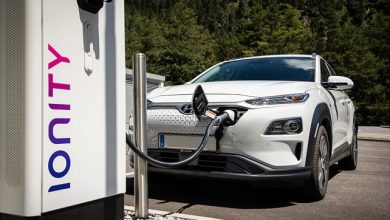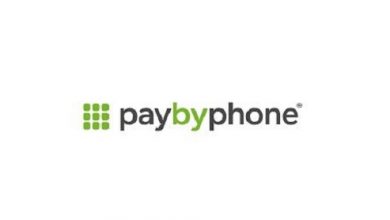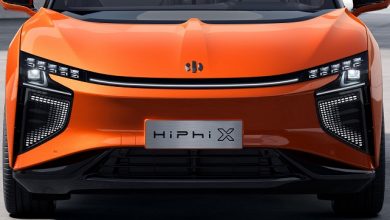Global automotive cybersecurity market analysis & forecast report 2021-2026 – business model, pricing model, & competitive landscape

The “Global Automotive Cybersecurity Growth Opportunities” report has been added to ResearchAndMarkets.com’s offering.
This study of the global automotive cybersecurity landscape includes an in-depth analysis of key cybersecurity market and technology trends in the connected vehicles space across passenger and commercial vehicle segments. It also explores different types of cybersecurity solutions and strategies value chain partners offer for mitigating threats during a vehicle’s life cycle.
Total addressable market for the cybersecurity of passenger vehicles will grow at a CAGR of 18.4% between 2020 and 2026, owing largely to the WP.29 regulation and OEMs in major economies competing to gain a competitive advantage.
Vehicles with embedded connectivity will account for about 80% of connected vehicle sales by 2026, and hence OEMs will prioritize securing them first. Overall, the market opportunity for automotive cybersecurity is progressive, with the regulatory landscape and innovation across the automotive value chain propelling growth scenarios and minimizing vehicle security threats.
The automotive industry is shifting towards intelligent networking systems and refined architecture for the development and deployment of advanced connected and autonomous vehicles. With an increasing number of connectivity features, the possibility of cyberattack threatens the safe operation of vehicles.
With the security aspects of connected vehicles addressed at both the regulatory and industry level, automakers will focus on offering more comfort and safety features in their vehicles. The recent WP.29 mandate on cybersecurity will be critical in the type approval of new vehicles from 2022 on.
Major OEMs like Volkswagen, General Motors, and Tesla are developing in-house capabilities and expanding partnerships with IT service vendors in lieu of operating and securing cybersecurity management systems (CSMS). Security companies, in contrast, partner with technology players like Microsoft and AWS to offer connected services to OEMs.
Tier I suppliers will move up the value chain to become solution providers for CSMS, vehicle security operations centers (VSOCs), and other services by partnering with enterprise IT/security companies, primary to help OEMs adhere to WP.29 regulations during development and threat management. Strategic partnerships for deploying effective cybersecurity solutions will be the priority of the entire ecosystem.
Key Topics Covered:
1. Strategic Imperatives
- Why Is It Increasingly Difficult to Grow?
- The Strategic Imperative
- The Impact of the Top Three Strategic Imperatives on Automotive Cybersecurity
- Growth Opportunities Fuel the Growth Pipeline Engine
2. Growth Opportunity Analysis, Automotive Cybersecurity
- Automotive Cybersecurity – The Possible Impacts of Attacks and Why They are Important
- Automotive Cybersecurity Key Findings
- Automotive Cybersecurity Scope Analysis
- Automotive Cybersecurity Segmentation
- Key Competitors for Automotive Cybersecurity
- Key Growth Metrics for Automotive Cybersecurity
- Automotive Cybersecurity Ecosystem
- Automotive Cybersecurity Value Chain
- Growth Drivers for the Automotive Cybersecurity
- Growth Restraints for the Automotive Cybersecurity
3. Automotive Cybersecurity – Total Addressable Market & Market Forecast
- Forecast Assumptions
- Connected Cars With Embedded Telematics – Sales Forecast
- Connected Trucks With Embedded Telematics – Sales Forecast
- Average Automaker Spend on Automotive Cybersecurity
- Automotive Cybersecurity Addressable Market Size Forecast – Likely Scenario for PVs
- Automotive Cybersecurity Market Size Forecast – Bearish Scenario (PVs)
- Automotive Cybersecurity Market Size Forecast – Bullish Scenario (PVs)
- Analysis of PV Cybersecurity Market Growth Factors in Different Scenarios
- Automotive Cybersecurity Addressable Market Size Forecast for Trucks
- Automotive Cybersecurity TAM Size Forecast by Vehicle Type
4. Automotive Cybersecurity Overview – Market Trends & Partnerships
- Automotive Cybersecurity Highlights – 2020
- Cyberattack Trends in Automotive History
- Cyber-risk Assessment of Vehicle SW and Systems
- Different Types of Cybersecurity Solutions in Vehicles
- Cybersecurity Threats and Required Solutions
- OEMs’ Cybersecurity Challenges
- Significant Strategic Initiatives by OEMs Prior to WP.29
- Overview of OEM Cybersecurity Partnerships and Strategies
- Automotive Suppliers – Supply Chain Cybersecurity Challenges
- Automotive Suppliers as Future Cybersecurity Partners for OEMs
- Industry’s Increasing Focus on Vehicle Cloud Security
- VSOC
5. Automotive Cybersecurity – Connected Cars vs. Connected Trucks
- Cybersecurity as Critical Layer of Automotive IoT Platform
- Connected Cars Getting Redefined
- Connected Cars with Embedded Telematics – Sales Forecast
- Cyberattack Scenarios in Connected Cars
- Key 2020 Automotive Cyberincidents – Connected Cars
- Cybersecurity in Connected Cars
- Key Trends of Connected Trucks Market
- Connected Trucks with Embedded Telematics – Sales Forecast
- Cyberattack Scenarios in Connected Trucks
- Major Cybersecurity Incidents – Trucks
- Cybersecurity in Connected Trucks
- PVs vs. LCVs and M/HCVs – Cybersecurity Analysis
- Autonomous Driving Services of the Future
- Cyberattacks Scenarios in Future AVs
- Cybersecurity in AVs
6. Key Regulations & Technology Trends in Automotive Cybersecurity
- New Versions of E/E Architecture in Vehicles
- Evolution of Cybersecurity Features and the Future Roadmap
- Key Regulations and Standards to Impact Vehicle Safety and Security
- WP.29 Regulation – Key Highlights
- WP.29 Key Requirements & Mandates
- ISO/SAE 21434 – Security by Design Approach
- Extensive TARA for Vehicle Type Approvals
- Cybersecurity Audit Services for Regulatory Compliance
- How Cybersecurity Partners Help OEMs with WP.29 and ISO 21434
- Cybellum Digital TwinsT Platform for Threat Assessment and Mitigation
- Upstream Security Cloud-based Security Framework
- Upstream Security AutoThreat Intelligence Module
- Argus Cybersecurity (WP.29 Compliance Services)
- SafeRide – AI-based Vehicle Health Management (VHM) Platform
- Harman Cybersecurity and WP.29 Compliance Services
- Bosch Cybersecurity
7. Automotive Cybersecurity – Business Model, Pricing Model, & Competitive Analysis
- Business and Partnership Model – Automotive Cybersecurity
- Key Funding and Focus Areas in Automotive Cybersecurity
- Business-to-Business (B2B) Vehicle Cybersecurity Pricing Model
- Automotive Cybersecurity Companies – Comparative Analysis
- Semiconductor and Chip Manufacturers – Comparative Analysis
- Automotive Tier I Suppliers – Comparative Analysis
- Enterprise IT Security Companies – Comparative Analysis
- Automakers’ Selection Criteria – Choosing a Security Solution
8. Conclusions and Future Outlook
- Automakers’ Shift in Expectations from Cybersecurity Partners
- SIs for Success and Growth – Automotive Cybersecurity
- Conclusions and Future Outlook
9. Growth Opportunity Universe
- Growth Opportunity 1 – Regulations Will Continue to Drive Automotive Cybersecurity Growth
- Growth Opportunity 2 – Advanced V2X Safety Use Cases in Vehicles Will Increase Demand for Cybersecurity
- Growth Opportunity 3 – Managed Security Services Will See Demand in the Automotive Industry
10. Next Steps
Companies Mentioned
- Cybellum
- Argus Cybersecurity
- Bosch Cybersecurity
- Harman Cybersecurity
- SafeRide
- Upstream Security
- Volkswagen
- General Motors
- Tesla
- Microsoft
- AWS





